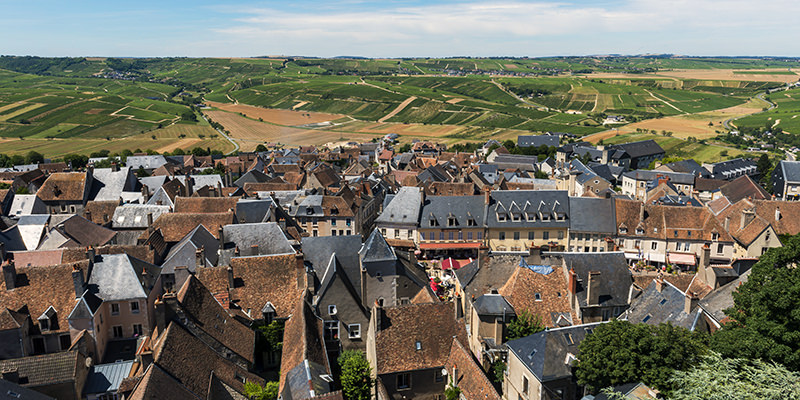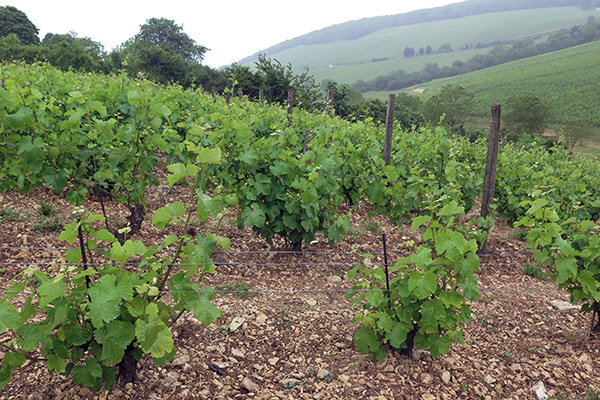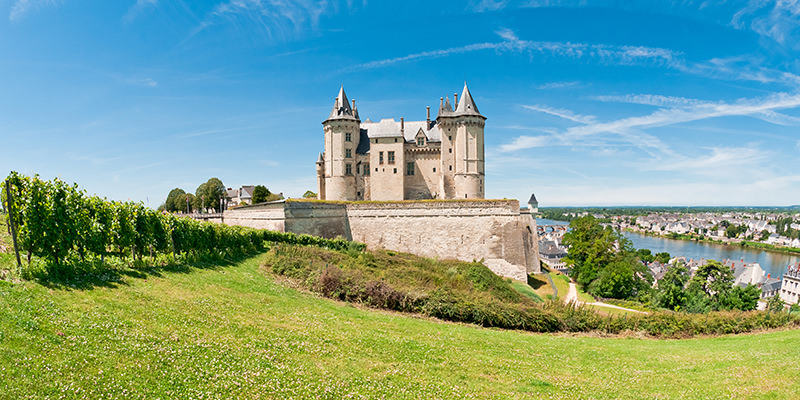
It’s simple to explain why the Loire Valley is my absolute favorite wine region. I simply can’t think of any other place where you can find so much diversity in terms of grape varieties, alongside such excellent value and a high proportion of small-scale winemakers devoted to farming organically. From the crisp, floral whites of Muscadet and Sancerre to the fuller-bodied Chenin Blancs to the fresh, light reds of the Loire Valley, you’ve got an incredible range to explore.
Being such a large region, there is a lot to take in—some very famous appellations as well as lesser-known but still exciting ones, and an always expanding list of excellent winemakers. The Loire Valley begins not too far west of Paris, and extends all the way to the Atlantic. It is a cool-climate region, which means that the reds tend to be on the lighter side and lower in alcohol, and also that organic farming is quite a challenge here, as rain and mildew present issues. While regions like Burgundy, Bordeaux, and Alsace have long been renowned for their Grand Cru sites, the Loire Valley has been considered in a much humbler light. In fact, for many decades winemakers there produced sweet wines that reputably caused bad headaches. But a whole wave of younger producers began stepping up quality in the 1990s, converting their vineyards to organic and devoting themselves to discovering the potential of their terroir. The result is super-tasty wine that’s way more affordable than France’s more famed regions.
Once you start exploring the Loire Valley, you’ll be thrilled at the food-friendly nature of its wines, the modest price tags on most bottles, and the constant discovery of producers. Here’s a short guide to some of the appellations to get you started. In terms of recent vintages, 2013 was a difficult year and the wines are generally light; 2014 was “classic” and the wines are balanced; 2015 was hot and the wines are on the fuller side.
Sancerre / Pouilly-Fumé / Menetou-Salon / Quincy
Main grapes: Sauvignon Blanc, Pinot Noir
Perhaps the most famous of the Loire appellations is Sancerre, known for its elegant (and expensive) Sauvignon Blanc wines, grown on limestone-rich soils. There is a fabulous mineral character to many Sancerre wines, particularly those coming from Silex (flint) soils. Neighboring appellations Pouilly-Fumé and Menetou-Salon also deliver wonderful Sauvignons that can be much more affordable, and a short distance away is the Quincy (pronounced [KWAN-CEE] appellation, also home to Sauvignon. With the exception of Quincy, there is a small amount of Pinot Noir grown in these appellations, and it has a wonderful, light quality with notes of crushed strawberries and soft tannins.

Cheverny / Cour-Cheverny
Main grapes: Romorantin, Gamay, Sauvignon Blanc
Chances are, you won’t encounter a bottle from these two small appellations unless you hit up a super-nerdy boutique wine shop that seeks out natural producers. But if you do happen upon a Cour-Cheverny wine, then you’ll have an opportunity to sample of my all-time favorite grapes, the incredible rare, ancestral variety Romorantin. Only about 60 hectares are left in France, which is almost nothing. Romorantin carries aromas of white peaches and honeysuckle, yet delivers a refreshing, mouthwatering tartness that makes you want glass after glass. You can also find great red and white blends and rosés from Cheverny that are affordable and fantastic on the dinner table.
Touraine
Main grapes: Sauvignon Blanc, Gamay, Pineau d’Aunis, Côt, Menu Pineau
Along with Romorantin, the ancestral grape Pineau d’Aunis is one to look for from the Loire Valley; there’s about 400 hectares left in France and it produces stunning, light, peppery reds and delicious berry-hued rosés. Touraine in general offers great value; its Gamay wines in particular are extremely tasty, with just a hint of tannins and enough fruit to make you want to pop the bottle in the fridge before guzzling it at a barbecue.
Vouvray
Main grape: Chenin Blanc
Welcome to Chenin Blanc country. Vouvray is perhaps as well known as Sancerre, although its wines haven’t yet become as expensive. In Vouvray, only Chenin Blanc is produced, and it delivers a special, vigorous minerality (look for sec on the bottle to be sure it’s dry); there are also some delicious sparkling, crémant wines made of Chenin Blanc coming from Vouvray.
Anjou
Main grapes: Chenin Blanc, Sauvignon Blanc, Cabernet Franc, Cabernet Sauvignon, Grolleau, Pineau d’Aunis
In Anjou, a neighboring and much larger appellation, the Chenin Blanc tend to be smoky and mineral but also somewhat round and full-bodied. The whites are usually 100 percent Chenin, although they can have some Sauvignon blended in. Red wines from Anjou are nicely balanced, with just enough roundness to complement the minerality. If you like sweet wines, look for the famous Coteaux du Layon appellation, located within Anjou; this late-harvest wine made from Chenin is fabulous with some cheese or tart peach pie.
Savennières
Main grape: Chenin Blanc
There is nothing but Chenin Blanc here in the rolling hills of this tiny appellation. It’s a highly regarded area whose wines tend to age very well. See a bottle of ’06 Savennières on a restaurant wine list? An ’02 at your favorite wine shop? Nab it, decant it, and enjoy it with rich seafood or poultry.

Chinon / Bourgeuil / Saumur / Saumur Champigny
Main grapes: Cabernet Franc, Cabernet Sauvignon, Chenin Blanc
Cabernet Franc is a beautiful, elegant, and sometimes powerful red grape that defines these neighboring appellations. Generally, the style here is to not let oak overpower the wine—so when barrels are used to age wine they are old and don’t impact much flavor, although they do lend structure to the wine. Because of stylistic differences in terms of winemaking, as well as diversity in terroirs, you can find light and fresh Cabernet Franc that’s perfect to toss in the fridge and then chug on the patio or pair with pizza, as well as serious, aged Cabernet Franc that deserves a decanter and contemplation. In either case, you’ll likely notice some of the grape’s hallmark “pyrazine” notes, similar to green peppers, and its overall herbaceous character. There’s a lot of really great Chinon rosé out there, too.
Muscadet
Main grape: Melon de Bourgogne
The unique white variety known as Melon de Bourgogne is mainly found in this coastal region, where vines are planted in different types of granite soil on softly sloping land, resulting in deliciously mineral, fresh wine. “Muscadet” is a nickname that developed to refer specifically to this white wine from this region. It is always dry, floral, easy to drink, and very friendly on the wallet. Try it next time you have oysters, seafood, or linguini with clams.
